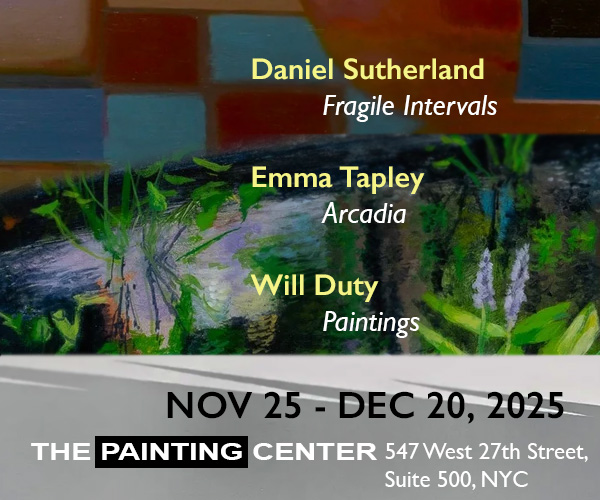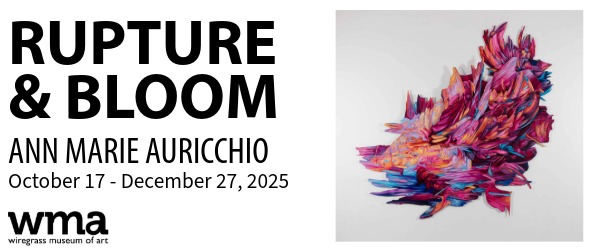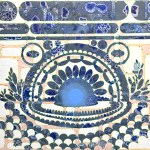In the beginning, when Malevich and El Lissitzky were making some of the first Western abstract paintings, abstraction was infused with politics and ideas. The connection continued through European art movements in the 1960s and 1970s, such as Arte Povera, ZERO Group, and Supports/Surfaces. In recent years, however, abstract form and process have become vehicles for more personal, less strident explorations of the provisional, the contingent and the casual.
[Image at top; Matthew Deleget, High Value Target, 2014, fluorescent orange enamel spray paint on wooden panel, 24 x 24 inches.]
These days, a painting often starts with a small idea about everyday life–a nasty break-up, for instance–that might incidentally be read as a metaphor for a larger, more universal issue or argument even though the connection may be completely unintended. Nonetheless, I’ve always taken the position that individual artists’ widespread adoption of these approaches is, in itself, an indication of our deep and pervasive social problems, regardless of the artists’ intents.
Recently in the studio I’ve begun to turn my own thinking around. I’ve resolved to look at the specific challenges and personal circumstances that form the impetus for each painting as symptoms of larger problems within our society. The problems then become the explicit basis for each painting, rather than simply an inadvertent or unconscious reference. Instead of using process and materiality as metaphor, I want to reinvigorate the notion that abstract paintings can in fact be directly engaged with the world. In his remarkable paintings currently on display at Outlet, Matthew Deleget seems to be thinking along the same lines.
The co-director of Minus Space, Deleget has never been particularly interested in traditional painting approaches such as wet-on-wet and glazing, color mixing, or other techniques that create the illusion of three dimensionality. Resolutely reductive, his practice is to make pristine, mid-size wooden panels and cover them with spray paint. For this series, he has done a little more, with a big impact. To wit, he has struck the surface of each painting with a small hammer until the smooth panel is pockmarked and sometimes destroyed. For many artists, such gestures would be violent acts rooted in personal frustration, but Deleget connects it with something larger. His intent is to create a visual equivalent to the damage US intervention has caused in Middle East countries, and he has succeeded quite elegantly. Improbably for a reductive artist, Deleget prompts us to vault past esoteric issues in contemporary abstraction to big issues in today’s world.
“Matthew Deleget: False Positives,” Outlet Fine Art, Bushwick, Brooklyn, NY. Through October 5, 2014.
Also on view: “Plot Lines: new painting by Colin Thomson,” Outlet Fine Art, Bushwick, Brooklyn, NY. Through October 5, 2014.
Related posts:
Last chance: Julian Pretto’s artists, at Minus Space
At Minus Space: Nothing is everything
——
Two Coats of Paint is licensed under a Creative Commons Attribution – Noncommercial-No Derivative Works 3.0 United States License. For permission to use content beyond the scope of this license, permission is required.

























It serves the intention well. However, this could also have been accomplished by displaying an artifact of a building, perhaps a poke marked by bullets wall from Baghdad or other towns where we have interfered.
Abstract Painting has meaning, not the borrowed meaning of depicted objects. Rather the important and different meaning of high art from the most creative of pursuits.
The challenge I find in this idea of the meaning of abstract art being directly engaged with the outer world is that if it is not relying on universal symbols, than how can it go beyond the esoteric and reach a larger audience? Perhaps that is the question for an artist working this way. Also, doesn't abstraction then become akin to a narrative art? Once again, perhaps this new model of working is beginning to blur such boundaries and need to label painting in a specific category of work. I am curious what others think about these questions and topic.